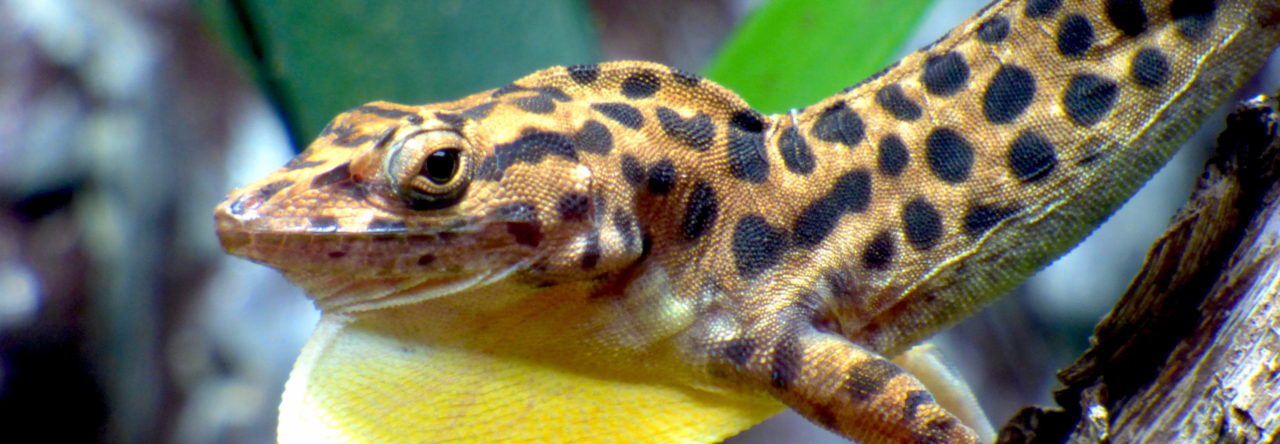
Anolis tigrinus. Photo by J. Losos.
I’ve previously posted on the surprising behavior of the Venezuelan A. tigrinus. We found them in astonishing abundance in the town of Colonia Tovar, in the mountains above Caracas. Despite their twig anole appearance and their twig anole habitat use–on twigs and other narrow surfaces–they don’t behave like twig anoles. Rather, they move rapidly and often, and seem to display a lot as well. Some Caribbean twig anoles move frequently, albeit slowly, and some display a lot, but none zip around like these guys. Moreover, we’ve seen a number of other mainland twig anoles, and they live life in the slow, slow, slow lane. So, our first day of tigrinus-watching was full of surprises. But that night, things got even more surprising, as I recently recounted in my most recent post in the Scientist at Work blog of the New York Times..

The tell-tale banded tail.

Anolis tigrinus sleeping on a stem. Photo by J. Losos.
As we walked down to the local brewhaus to grab a pizza, we casually scanned our surroundings. And as we walked by a weed patch, there was the tell-tale white blob hanging on to the end of a grass blade. It could be only one thing–an anole. In the Caribbean, this would be primo grass-bush anole habitat, but there were no grass-bush anoles here. Quick examination confirmed that it was an A. tigrinus. That’s right, a twig anole in the grass. And then as we looked around, there were more and more of them–the lot was silly with twig anoles.
The next two days, I came back during the day to look for twig anoles. Unlike in the woods where we had found them initially, the twig anoles here were hard to find during the day, even though the place was full of them at night. The few I saw were deep in the vegetation–my conclusion is that this guys are moving through the vegetation, navigating along narrow branches, stems, and grass-blades.
Which leads, of course, to the question of why in the Caribbean, grass-bush anoles use low-lying narrow vegetation in grassy, bushy areas, while twig anoles use narrow twigs and branches up in the trees. Perhaps A. tigrinus is just being opportunistic, taking advantage of an unoccupied habitat and moving in? Certainly a plausible explanation, but I’ve never, ever heard of a twig anole in the grass in the Caribbean. Has anyone? Not even in Jamaica, where there are no grass-bush anoles.
This in turn reminds me of the trunk-crown anoles, A. allisoni, I observed in the grass in Roatan, Honduras. If nothing else, it’s important to remember that anoles are very behaviorally flexible and adaptable. Even though they’ve specialized to different microhabitats, they aren’t so specialized that they can’t use other microhabitats when they get the chance. Crown-giant anoles on the ground are one example, but that’s another story.
In any case, A. tigrinus is a very interesting anole, and it’s great abundance would make it an excellent choice for behavioral and ecological studies.

Sweet dreams, little tiger anole. Photo by J. Losos





 With regard to anoles, Vanzolini made two important contributions in collaboration with Ernest Williams. The first was their
With regard to anoles, Vanzolini made two important contributions in collaboration with Ernest Williams. The first was their 






